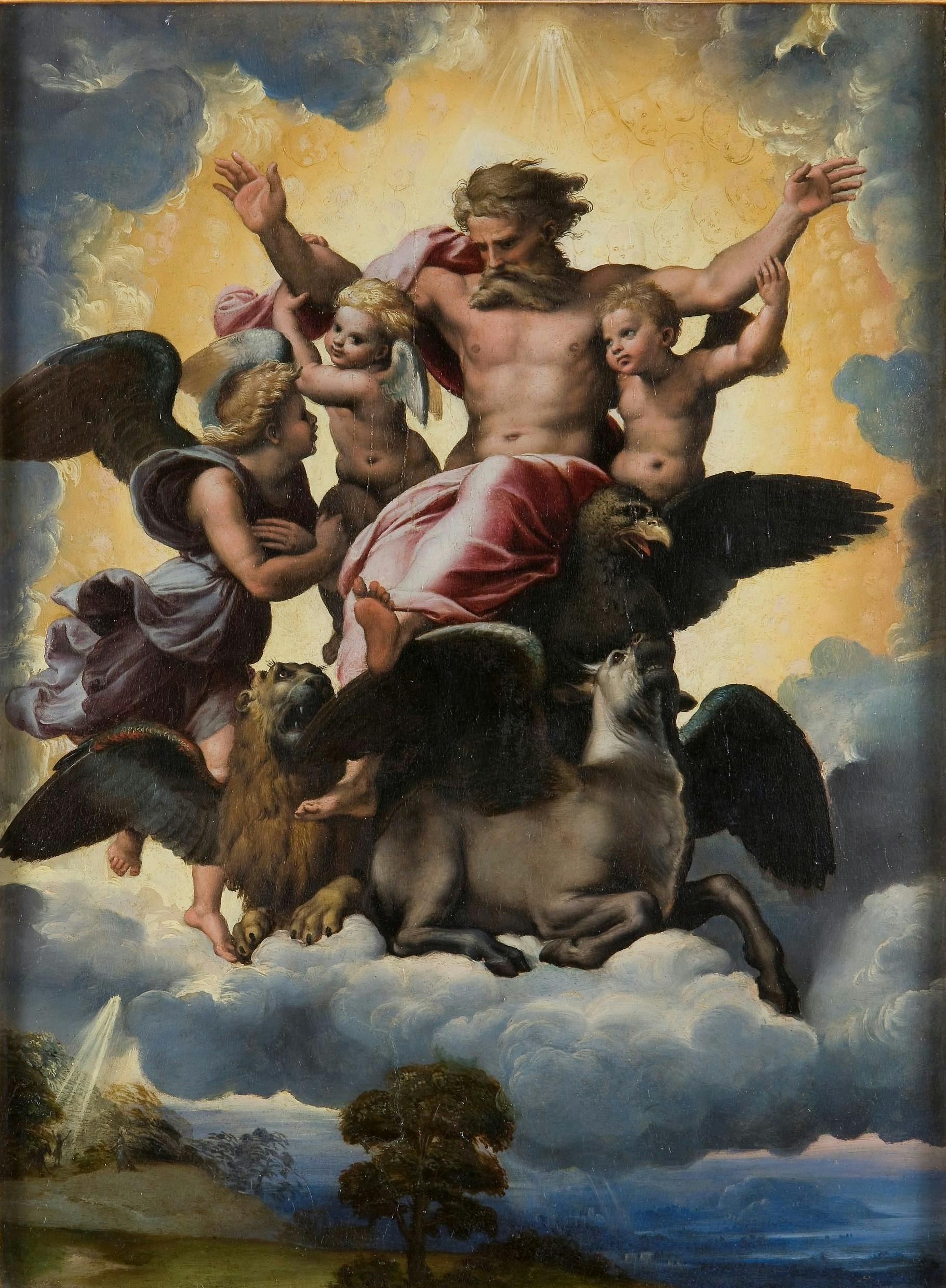Ezekiel’s Vision
Raphael (Urbino 483 – Rome 1520)
This small panel is identified as the one described by Vasari in his “Lives” as “containing a Christ after the manner of Jupiter in Heaven, surrounded by the four Evangelists as Ezekiel describes them”. In fact the scene is taken from an episode in the Book of Ezekiel. In the centre is the Holy Father, arms lifted in blessing, held up by two angels, an eagle, an ox and a lion, the symbols of the evangelists, John, Luke, and Mark, while Matthew is depicted as the angel enrobed in a pale blue-purplish chlamys. A corolla of angelic heads fills the red hot opening in the sky, and are painted in monochrome or simply engraved in the primer, creating a vibrant sense of movement. Below, under the band of clouds, is a broad landscape of land and sea that flows into the distance, amid flashes of bright light and shadow. To the left, a ray of light falls onto the two silhouettes, beside a horse, one of which is usually identified as the prophet Ezekiel. This small panel is generally agreed to date back to 1517-1518, the period of Raphael’s most intense activity in Rome, when his workshop was also populated by gifted collaborators to whom the artist gave the most important tasks for translating his ideas in both graphic and pictorial terms. This is why scholars have often seemed to doubt his authorship of the work, preferring to attribute it to Giulio Romano or Giovan Francesco Penni. And yet, the superb pictorial quality of Ezekiel’s Vision does not seem to be conceivable as the work of anyone but Raphael, in view of the monumental nature of the figures and the wide range of the composition being so skillfully reduced to a small format, as well as the soft, delicate variety of the colour changes. The subject was also used in a hanging made from wool, silk and gold thread, created as a “sopracielo” (the canopy of a four-poster bed) for the “Letto dei Paramenti” of Leo X, the bed of state where the pontiff would put on his robes before an official ceremony.
